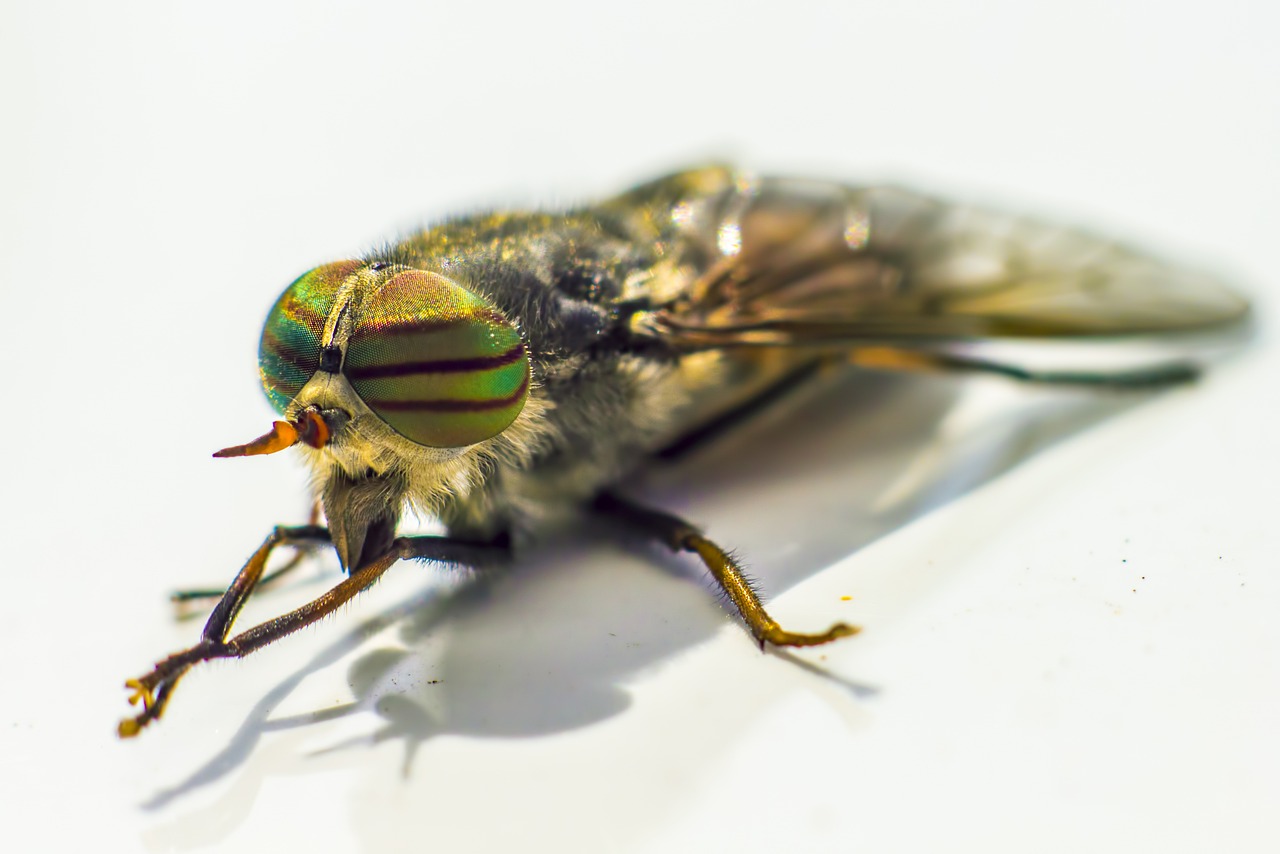The Band-eyed Brown Horse Fly (Tabanus bromius) is a member of the family Tabanidae, known for its large size and distinctive banded eyes. Here are some key details about this species:
Appearance
- Size: Adult Band-eyed Brown Horse Flies are relatively large, typically measuring 10-14 mm (0.4-0.6 inches) in length.
- Coloration: Their bodies are generally brown, with a slightly metallic sheen on the thorax and abdomen.
- Eyes: The eyes of Tabanus bromius are striking, with horizontal bands of bright green, purple, or yellow, giving them a unique and identifiable appearance.
- Wings: The wings are clear with no distinct markings, but they may have a slight smoky tint.
Habitat
- Range: Tabanus bromius is widely distributed across Europe, Asia, and parts of North Africa.
- Environment: They prefer moist environments such as wetlands, marshes, riverbanks, and moist meadows. They can also be found in forests and agricultural areas.
Behavior
- Feeding: Female horse flies are hematophagous, feeding on the blood of mammals, including livestock and humans. They use their sharp, scissor-like mouthparts to cut the skin and feed on the blood that pools at the wound. Males do not bite and primarily feed on nectar and other plant juices.
- Biting: The bite of a female horse fly can be painful and irritating due to the slicing action of their mouthparts.
- Activity: These flies are most active during the daytime, especially on warm, sunny days. They are strong fliers and can travel long distances in search of hosts.
Life Cycle
- Reproduction: Mating usually occurs in flight during the summer months. After mating, females lay their eggs on vegetation near water or in moist soil.
- Eggs: The eggs hatch into larvae, which develop in wet soil, mud, or decaying organic matter. The larvae are predatory and feed on other small invertebrates.
- Pupation: After several larval stages, they pupate in the soil. The pupal stage lasts several weeks before the adults emerge.
- Adults: Adult Band-eyed Brown Horse Flies have a short lifespan, focused on feeding and reproduction.
Adaptations
- Vision: Their large, banded eyes provide excellent vision, helping them locate hosts and avoid predators.
- Mouthparts: The females’ specialized mouthparts are adapted for cutting skin and feeding on blood, which is essential for egg production.
- Flight: They are strong fliers, capable of covering significant distances to find suitable hosts and breeding sites.
Ecological Role
- Pollination: While female horse flies feed on blood, males contribute to pollination by feeding on nectar and visiting flowers.
- Food Source: They serve as prey for various predators, including birds, bats, and other insects, playing a role in the food web.
- Pest: Female horse flies can be significant pests to livestock and humans due to their painful bites and potential to transmit diseases.
Conservation
- Status: Tabanus bromius is not currently considered endangered. They are widespread and relatively common in their preferred habitats.
- Management: Managing horse fly populations can be challenging due to their biting behavior. Protective clothing, insect repellents, and physical barriers can help reduce bites. In agricultural settings, measures to reduce breeding sites, such as proper drainage and waste management, can help control populations.
The Band-eyed Brown Horse Fly (Tabanus bromius) is a fascinating yet troublesome insect, known for its large size, distinctive banded eyes, and painful bites. While they can be a nuisance to humans and animals, they play an important role in their ecosystems, particularly in pollination and as part of the food web.
Visited 393 times, 7 visit(s) today
Views: 438
Subscribe to the newsletter:
